It’s amazing to think that, within a few hundred kilometres on Italian motorways, Nebbiolo has 3 different names. Three! Yet despite all that divergence, our Australian context for ‘the king of grapes’ tends to start and stop in the foggy rolling hills of the Langhe.
This trip, however, I finally found myself in one of those other places where they grow Nebbiolo in Valtellina. This beautiful part of the world lies in far northern Italy near the Italian Swiss border – an area better known for hot springs, killer hills to cycle up and ski resorts. What’s even more dramatic is the location of the vines themselves. Think vineyards concentrated on steep, terraced hillsides, lining ancient u-shaped valleys, the 3000m peaks towering high above.
Stunning countryside.
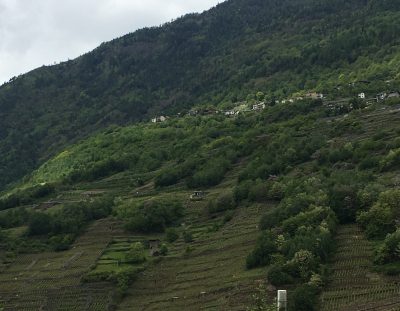
In Valtellina, Nebbiolo is known as ‘Chiavennasca’ though Nebbiolo is used in the conversation. Local winemakers allege that the local clone is an ancient one that is different from that grown further south in Barolo and Barbaresco. There seems to be some conjecture about that point, but no doubt that these are rather different wines.
What’s more intriguing is the local version of a super wine. It’s an Amarone-inspired red known as Sfursat (or Sforzarto or even Sfurzat) that sees the Chiavennasca grapes (with 10% other varieties allowed in the mix) given the appassimento treatment and air-dried for up 3-4 months. Like Amarone, the effect is to turn what is otherwise a fragrant, light to medium bodied red into something deep, dark and intense. It doesn’t always work, but the best wines have the tannins of great Nebbiolo and the richness of Amarone. Intrigue+.
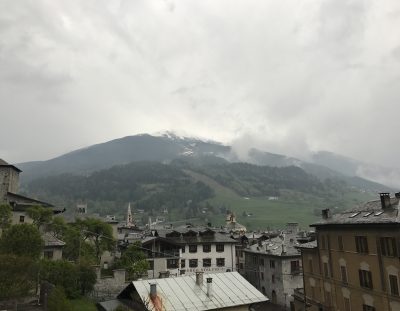
While I didn’t get anywhere enough time to explore the wines of Valtellina, these two stuck out as super representative of the style and region (plus both wineries have products available in Oz).
Ar.Pe.Pe Grumello Rocca De Piro Riserva 2011
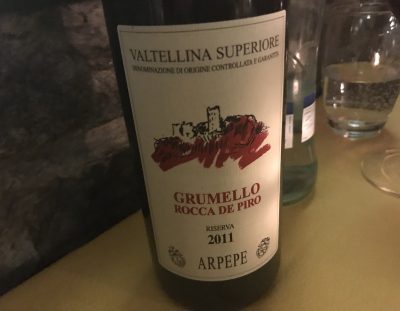
Ar.Pe.Pe is very much the low intervention, classic cool face of Valtellina. Long maceration times, big barrels and long maturation. Classic. This red comes from Grumello, the slope north-east of Sondrio with a castle on it. This is very much a Nebbiolo, but an alpine wine, with the ferrous cherries on the nose and a quite lean and firmly structured palate. It’s bony, but not unattractive, the style here about elegance, the acid and tannins shaping the palate. I almost thought of a Coteaux Champenois here, but it’s riper than those anaemic wins (and with much more shapely tannins). Graceful food wine too. Best drinking: 2017-2030+. 17.8/20, 92/100. 13.5%, circa €40 on a list. Would I buy it? Sure.
Nino Negri Sfursat Carlo Negri 2013
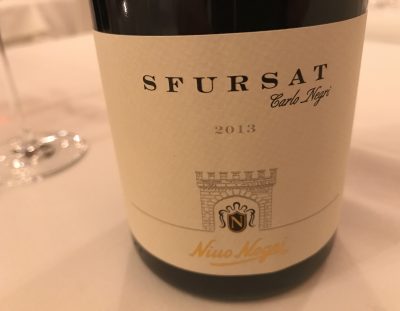
Nino Negri are one of the larger Valtellina producers, with a range spanning the gamut of different styles. This Sforzato/Sfursat (the DOC is Sforzato di Valtellina) sees handpicked grapes dried for 3 months and then matured for 22 months in barrel. Of note is the temperature control and attentive winemaking too. Modern! The effect makes this almost like one of the black Negroamaros from the opposite end of Italy, but without the hardness. The red cherry fruit now had a dried, coffee bean edge, though the style doesn’t stray into heaviness – I didn’t spot any volatility either, so the drying must have been careful. It’s just a fraction too deep and guttural to be a real drinker, but the completeness of the style makes this impressive wine. Interesting that the tannins here were relatively soft; nothing aggressive, just firm. A polished example of the genre. Best drinking: 2017-2040. 17.7/20, 92/100. 15%, €38ish on a list. Would I buy it? Two glasses. I can admire the style, even if I couldn’t drink loads of it.
Help keep this site paywall free – donate here




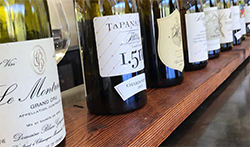
Leave A Reply